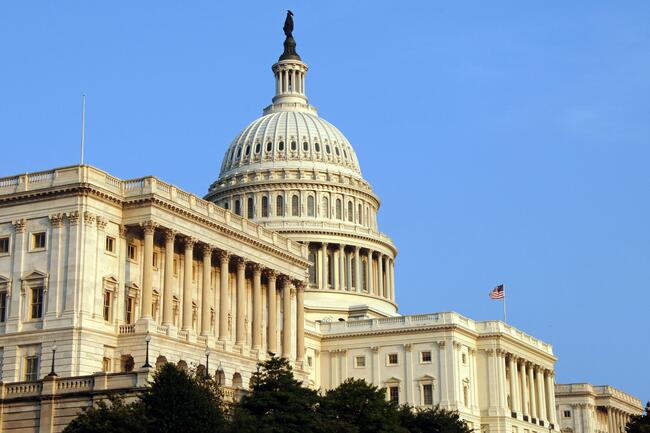You have /5 articles left.
Sign up for a free account or log in.

Juanmonino/E+/Getty Images
As the White House and Congress determine our national budget and the fate of agencies like the Department of Education, we need to say out loud what we know: It is the students of the lowest means who will pay the highest price for reckless educational policy. Should the current tax proposal become law, those in the lowest quintile of American income would see a savings of about $90 a year. What they and their children will lose is far more.
America’s research universities are making clear what is at stake in the assault on their funding and autonomy: their role as an essential source of innovation in science, medicine and technology. The economic health of our country, the well-being of our people and our stature as the global leader in the discovery of new knowledge depend on that innovation.
And through the American Association of Colleges and Universities, hundreds of college and university presidents from across all types of higher educational institutions have published a clear-eyed “Call for Constructive Engagement,” which names the danger of “the unprecedented government overreach and political interference” into their shared devotion to free inquiry. That freedom makes colleges “essential to American prosperity and … productive partners with government in promoting the common good.”
As we champion research and free inquiry, we must again and again tell the story of what education means for our least advantaged students—and the damage they will suffer if the current proposals are enacted. The overwhelming percentage of students who seek to earn two- or four-year degrees attend community and tribal colleges, state comprehensive and land-grant universities, and independent colleges—the latter often founded by immigrant communities to serve their children in a new world. These colleges are a testimony to the stunning way higher education has been a prime force for realizing the American dream, a dream we can see in graduates’ lives of professional accomplishment, community service and patriotic citizenship.
The same institutions lift up their communities: as an employer, a partner with businesses in workforce development, a support for K-12 schools, a draw to young families looking for a place to live, a venue for arts and athletics events, and a source of civic pride. Not a single chamber of commerce or economic development corporation wants to see their local college disappear.
Most fundamental at this moment, these colleges create economic mobility. We know that low-income status limits the probability of enrolling in any kind of postsecondary education. Nationally, 89 percent of students in the top income quintile enroll in any type of college within 18 months of finishing high school, but only 51 percent of those in the lowest quintile do. And if we look only at four-year colleges the difference is even more stark: About three-quarters of top-quintile students enroll, triple the rate for their lowest-quintile peers. Of undergraduates who receive a federal Pell Grant—given to those with “exceptional financial need”—about 45 percent come from families with incomes of $20,000 or below. It is the opportunity of such Americans, young and not so young, that is now most at risk.
The White House budget proposal zeros out funding for the Supplemental Educational Opportunity Grant, the GEAR UP and TRIO programs that help low-income students prepare for and succeed in college, as well as for the Child Care Access Means Parents in School Program, which helps parenting students enroll, and would slash funding for Federal Work-Study by more than three-quarters. The House of Representatives’ reconciliation bill would “dramatically reduce the number of students who qualify for full Pell Grants” and would eliminate subsidized federal loans, loans that currently do not accrue interest while students are in college and that protect them from required payments until after graduation.
Behind these budget particulars is a broader rejection of the virtue and value of higher education itself: “The university is the enemy.” Such dismissals hit low-income students the hardest. They are not likely to be worried about the strength or flaws of DEI at the Ivies: They’re hoping to get a credential or two-year degree, and some of them a baccalaureate so that they can become teachers, nurses, IT professionals or church, business and civic leaders in their community. Already, they hear all too often that education after high school is “not for you,” that “you won’t fit,” that “you can do just fine” without any postsecondary credential. When they and their families hear that the institutions offering such credentials are both out of reach and of no use, they may well turn away.
These students need pathways—through high school, into postsecondary learning and into credentials that allow them to grow in their work and to move if the shop is sold, the mill moves overseas or the branch hospital closes. Much more needs to be done, but support can be built for them and for all with substantial financial need. In the South Carolina county where I now live, the Spartanburg Academic Movement has united public K-12 leadership, the city, local businesses and our seven higher educational institutions to create a cradle-to-career network to make such pathways real.
In Minnesota, where I recently retired as a college president, students can carry the state grant to one of more than 130 public or private colleges, and those coming from families with an income below $80,000 can attend a public university without paying tuition. At my old institution, Concordia College in Moorhead, the Promise Program now covers 100 percent of tuition for students whose families make less than $90,000. Such interconnected efforts affirm the potential of our least advantaged students and their role in the health of our nation. Yet these ladders of support will all be weakened if federal support is kicked out from under them.
Every May in America, there are countless stories, letters and media posts about “Decision Day” for accepted students. As the House bill, passed by the narrowest of margins, moves to the Senate, these are decision days now for our elected leaders in Congress and our executive branch, and for all of us who cherish the hopes and strength of our students. Every one of them.




